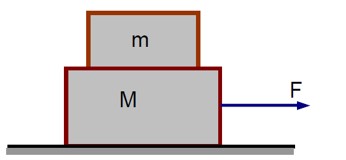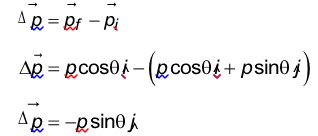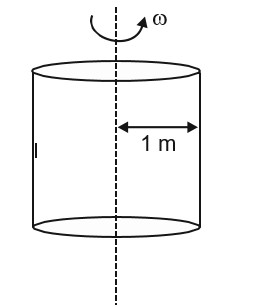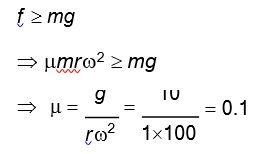Two blocks (m = 0.5kg and M = 4.5kg) are arranged on a horizontal frictionless table as shown in figure. The coefficient of static friction between the two blocks is 3/7. Then the maximum horizontal force that can be applied on the block so that blocks move together is ---------N. (Round off to the Nearest Integer) [ Take g as 9.8 ms-2]
Two blocks (m = 0.5kg and M = 4.5kg) are arranged on a horizontal frictionless table as shown in figure. The coefficient of static friction between the two blocks is 3/7. Then the maximum horizontal force that can be applied on the block so that blocks move together is ---------N. (Round off to the Nearest Integer) [ Take g as 9.8 ms-2]
-
1 Answer
-
For the combined system of mass M and m, the acceleration under an applied force F is:
a = F / (M + m)The static friction force (f_s) on the top block (m) provides its acceleration:
f_s = MA = m * [F / (M + m)] = mF / (M + m)For the top block not to slip, the required static friction must be less than or equal to the maximum possible static friction (μmg):
f_s ≤ μmg
mF / (M + m) ≤ μmg
F ≤ μ (M + m)gUsing the values implied in the solution:
F ≤ 21 N
Similar Questions for you
T1 = m (g + a)
T2 = m (g - a)
Apparent weight = mg – ma
Taking an Exam? Selecting a College?
Get authentic answers from experts, students and alumni that you won't find anywhere else
Sign Up on ShikshaOn Shiksha, get access to
- 65k Colleges
- 1.2k Exams
- 679k Reviews
- 1800k Answers





